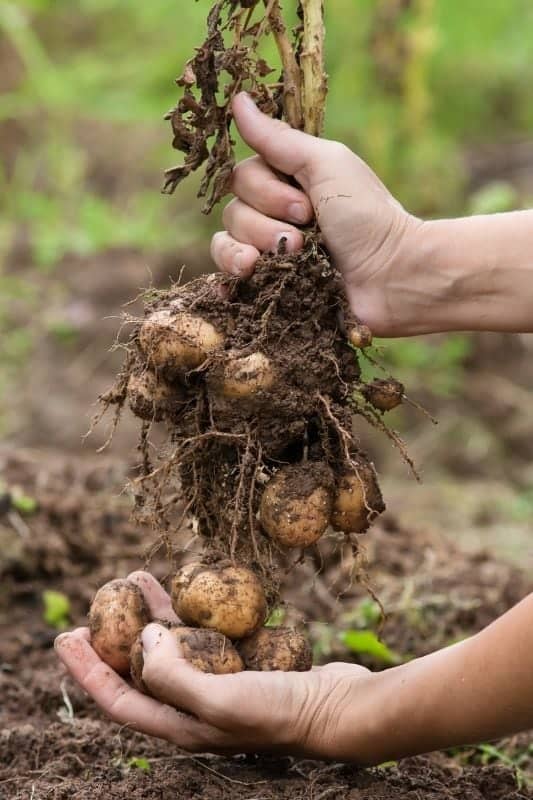Introduction
Knowing when to pick potatoes is essential for maximizing flavor, yield, and storage life. Harvesting too early or too late can affect the texture and taste of your potatoes, as well as their shelf life. In this article, you’ll learn how to identify the optimal time to harvest potatoes, factors that influence the timing, and practical tips to ensure your potato crop reaches its full potential.
How to Tell When Potatoes Are Ready to Harvest
Signs from the Potato Plant
The most reliable indicator that potatoes are ready to be picked is the condition of the plant itself. Experienced gardeners observe these signs:
- Foliage Yellowing and Dying Back: When the leaves start to yellow and the vines begin to wilt, it often signals that the tubers have matured.
- Flowering Stage: Potatoes typically flower several weeks before harvesting. However, flowering alone is not a definite sign; it means tubers are forming.
- Time Since Planting: Depending on the potato variety, most mature potatoes are ready 70 to 120 days after planting.
Soil Testing and Digging
Gently dig around the base of the plant to check tuber size. If potatoes have reached the desired size for your use, it’s a good time to harvest. Early digging can be done for “new potatoes,” which are small and tender.
Factors Affecting Potato Harvest Time
Variety and Maturity Period
Potato varieties differ in maturation times:
- Early Varieties: Ready in about 70-90 days; ideal for new potatoes.
- Maincrop Varieties: Take 100-120 days; better for storage and larger yields.
Understanding your potato type helps set realistic expectations.
Growing Conditions
Weather and soil conditions impact growth rates:
- Temperature: Potatoes grow best in cool climates; excessive heat can speed up or stress plants.
- Soil Moisture: Consistent moisture promotes healthy tuber development; drought can delay maturity.
Disease and Pest Influence
Diseases like blight or pests can force earlier harvests to prevent crop loss. Regular monitoring is crucial.
How to Harvest Potatoes Properly
Step-by-Step Harvesting Guide
- Stop Watering: Cease watering about two weeks before harvest to toughen skins.
- Use the Right Tools: Employ a garden fork or spade to gently loosen soil without damaging tubers.
- Dig Carefully: Start digging 12-18 inches from the plant base to avoid piercing potatoes.
- Handle with Care: Avoid bruising tubers to extend storage life.
Harvesting New Potatoes
For tender new potatoes, harvest when plants begin flowering but before foliage dies back. These are best eaten fresh.
Storing Potatoes After Harvest
Cure Before Storage
Potatoes benefit from a curing period of about 1-2 weeks in a dark, well-ventilated area at 45-60°F (7-15°C). This process thickens their skins and extends shelf life.
Ideal Storage Conditions
- Temperature: Keep potatoes cool but not freezing.
- Humidity: Moderate humidity prevents shriveling.
- Darkness: Store in darkness to prevent greening and solanine buildup.
Expert Tips for a Successful Potato Harvest
- Mark Planting Dates: Keep records to anticipate harvest windows.
- Inspect Regularly: Watch for signs of disease or pests.
- Harvest in Dry Soil: Wet soil can lead to tuber rot.
- Use Mulch: Mulching helps retain moisture and control weeds.
Conclusion
Harvesting potatoes at the right time is crucial for optimal taste, texture, and storage potential. By observing plant signals like foliage dieback, understanding your potato variety’s maturity period, and applying proper harvesting techniques, you can enjoy a bountiful and high-quality potato crop. Remember to cure and store your potatoes correctly to maximize their shelf life. With these expert insights, your next potato harvest will be both rewarding and delicious—ready to fuel your meals with fresh, homegrown goodness.
